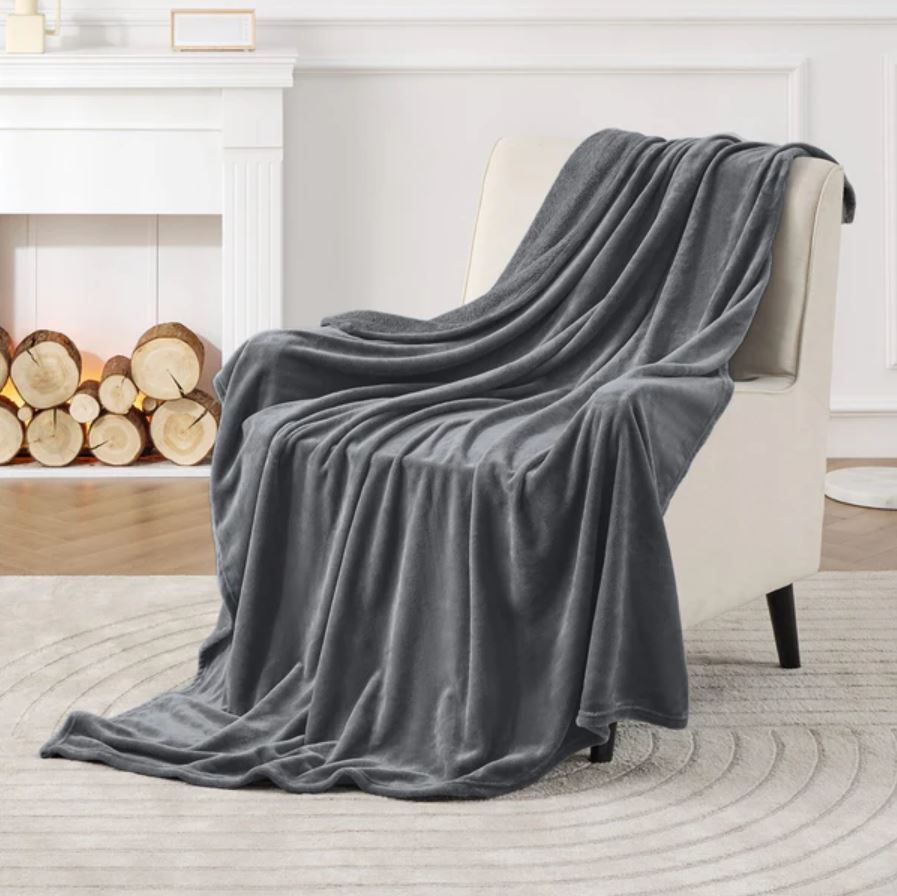Fleece blankets are a standard option for cold evenings and lazy days because of their reputation for warmth and comfort. But it might be challenging to choose the best fleece blanket for you, given the many options available. This comprehensive guide will cover the wide variety of fleece blankets, things to consider when selecting one, and how to take care of your fleece thick blanket.
What Is Fleece?
A synthetic fabric composed of polyester called fleece. It was first developed as a lighter-weight wool substitute but has gained popularity for use in blankets and other cosy goods. The qualities of fleece include softness, warmth, and the capacity to remove moisture from the body.
Why Are Fleece Blankets So Popular?
There are various reasons why fleece blankets are popular. They are perfect for cuddling on the sofa or in bed since they are warm, lightweight, and soft. Fleece is an excellent material for allergy sufferers since it is hypoallergenic and resistant to dust mites. In addition, fleece blankets come in various colours and patterns and are simple to maintain.
Types Of Fleece Blankets
Microfleece Blankets
Lightweight, cosy, and comprised of densely woven threads, microfleece is a fabric. It is famous for its smooth feel and is often used in bedding, clothes, and blankets.
Pros and Cons: Microfleece is a lightweight, cosy material with few drawbacks. It may, however, pill over time and is not as resilient as certain other kinds of fleece.
Ideal use: Microfleece blankets are ideal as an extra layer on a bed or for snuggling up on the couch.
Polar Fleece Blankets
Polar fleece is a soft, warm, and breathable medium-weight fabric. In blankets, coats, and outdoor equipment, it is often utilised.
Pros and Cons: Polar fleece is warm, absorbent, and long-lasting. It may, however, sometimes feel scratchy on the skin since it is not as soft as other varieties of fleece.
Ideal use: Polar fleece blankets are best used as an additional layer on a bed or for outdoor activities like camping.
Sherpa Fleece Blankets
A form of fleece known as sherpa fleece has a dense pile on one side and a smooth surface on the other. A lot of blankets and clothing contain it.
Pros and Cons: Sherpa fleece is warm, plush, and wonderful to the touch. However, it may be heavy and is sometimes more costly than other kinds of fleece.
Ideal use: You may use a Sherpa blanket to keep warm when snuggling on the couch or as an extra blanket on your bed.
Coral Fleece Blankets
Coral fleece is a silky, lightweight fabric with a velvet-like feel. It is often used in baby items, robes, and blankets.
Pros and Cons: Coral fleece is soft, lightweight, and simple to maintain. It may shed sometimes and is not as warm as other kinds of fleece.
Ideal use: Coral fleece blankets are best used as baby blankets, thin throws, or in warmer climates.
Berber Fleece Blankets
Heavy-weight berber fleece has a smooth surface on one side and a dense pile on the other. It is often used in rugs, clothing, and blankets.
Pros and Cons: Berber fleece offers a luscious feel and is warm and sturdy. However, the price is usually higher than comparable options.
Ideal use: Berber fleece blankets are the best choice for a fashionable, comfortable blanket. They work well as a statement piece and provide a lot of texture to a space.
Comparison Of Different Fleece Blanket Types
- Warmth: Sherpa and Berber fleece, followed by polar fleece and microfleece, are the warmest varieties of fleece blankets.
- Softness: Sherpa, Berber, and coral fleece are often the softest varieties of fleece blankets.
- Sturdiness: After Berber fleece, polar and microfleece are the most durable fabrics for resistance to pilling and wear.
- Breathability: Polar fleece, Sherpa fleece, and microfleece are the three most breathable types.
- Cost: Microfleece is often the least expensive kind of fleece blanket, with Sherpa and Berber's fleece having the potential to be more costly.
How To Care For Your Fleece Blankets?
- Washing: Read the care instructions before washing your fleece blanket. In order to minimise damage or shrinking, use a mild cycle and stay away from excessive heat.
- Drying: For most fleece blankets, air drying is preferable, but you may also use a low heat setting in the dryer. To avoid damage, avoid using excessive heat or drying time.
- Storing: Carefully fold your fleece blanket and keep it in an excellent, dry location. To avoid mould or mildew, keep it out of direct sunlight and moist locations.
Because of their softness, warmth, and adaptability, fleece blankets are a popular option. Before buying a fleece blanket, consider the numerous available varieties and elements like warmth, softness, durability, size, colour and design, and maintenance recommendations. You may benefit from the warmth and cosiness of a fleece blanket for many years by making the appropriate choice and taking good care of it.


